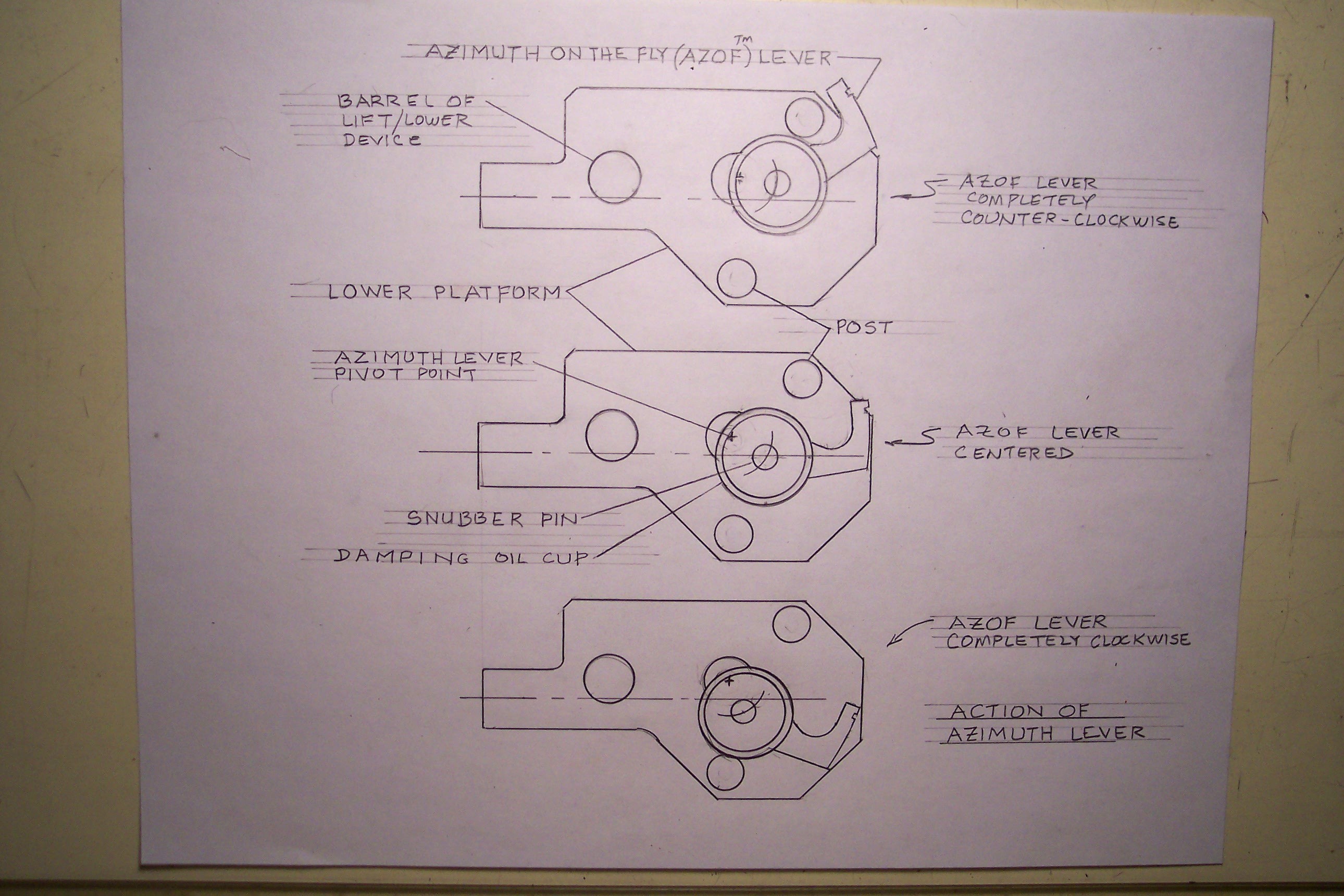|
|
The Woody String Bearing System The Woody tonearm would be classified as a constrained unipivot with a short string bearing (a unique string
bearing design) and viscous damping. Unipivot
tonearms can be classified as constrained and unconstrained. Unconstrained unipivot tonearms, a VPI arm for example, can dance
around laterally during tonerarm handling and just after stylus touchdown. The Nottingham arms uses a tricky internal nylon monofilament snubber system that I have never figured out. The Durand arms have a lateral pin projecting
horizontally from the armwand at the pivot. This pin is at right angles to the armwand axis. This pin bears lightly on a horizontal
rail, preventing the armwand form rotating about its axis. Lateral balance is adjusted so that the pin barely touches the
horizontal rail. The pin acts as a snubber. Adjusting the height of the rail adjusts azimuth. The most expensive Durand arm
model allows azimuth adjustment on the fly. The
constraint system of the Woody tonearm is uniquely configured to allow adjustment of azimuth on the fly (while the record
is playing). You can read about the Woody constraint system and azimuth adjustment on the fly at the following link: http://vtaf.com/id98.html . There are
several examples of string bearing tonearms, including the Well Tempered arm by Bill Firebaugh, the Frank Schroeder tonearms,
the Clearaudio Concept tonearms, and the Woody. The Well Tempered
arms by Bill Firebaugh use a pair of long strings above the armwand. The string pair is twisted about 90 degrees, creating
radial stiffness. An oil damper below the arm adds stability and damping. The Well Tempered arms are generally acknowledged
to be tricky to set up and very fine sounding. The Schroeder tonearms use a single long string above the armwand, and a strong magnetic attractor below
the arm. The magnetic attractor adds lateral stiffness and electromagnetic damping. The Schroeder arms are generally acknowledged
to be very fine sounding. The Clearaudio
Concept tonearm uses a powerful magnet above the armwand to lift the entire weight of the armwand system, with a wire below
the armwand to resist the uplift of the powerful magnet. The Woody uses a novel, compact, and unique string bearing arrangement above the armwand. The unique configuration
of the bearing creates lateral stiffness and freedom to pivot. An oil damper below the arm adds stability and damping, and
is incorporated into the azimuth adjustment system (which works on the fly). The Woody arms are generally acknowledged to
be very fine sounding.
The
Woody string bearing occupies a space that is about .12 inches tall by about .06 inches wide. The bearing is located just
above the armwand, and supported from a vertical axis knob at the center of a platform above the armwand. The knob allows
a twist to be put into the bearing to create anti-skate (which can be adjusted on the fly). The bearing consists of four strings
(of very high strength, comparable to Kevlar) forming an inverted pyramid above the pivot point and an upright pyramid below
the pivot point. The inverted pyramid is attached to the anti-skate knob. The upright pyramid is attached to the top of the
armwand. The pivot is the point where the apex of the upper pyramid touches the apex of the lower pyramid. The image below is a cross section of the bearing system, showing
the string bearing hanging from the anti-skate adjuster knob, the tonearm wand hanging from the string bearing, the short
section of aluminum channel below the tonearm at the pivot point engaging the snubber pin which is integral with the damping
cup. The damping cup is affixed to the azimuth adjustment lever which can be rotated to change azimuth.
The image below shows the azimuth adjustment lever with the damping cup (integral with the snubber pin at the center of the cup) peeking out from behind one of the support posts.
|

